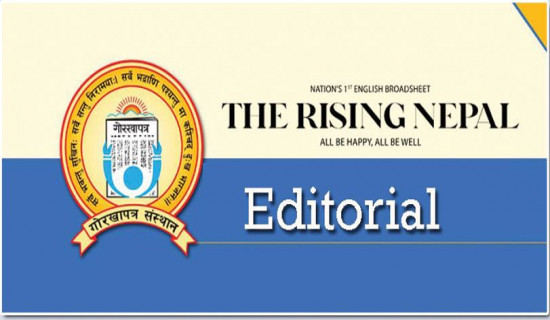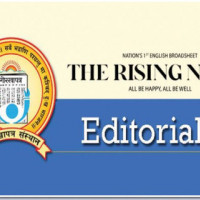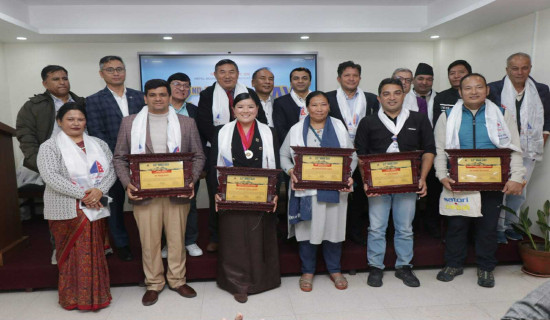- Saturday, 1 November 2025
Women Representation In Local Level Election
Election forms the cornerstone of representative democracy. It not only enables citizens to pick the leaders of their choice but also helps them hold elected officials accountable to their actions. Election is the most accepted political process to ensure legitimacy and viability of the given system. It energises the system by sending fresh people’s representatives into the governance body. As the people elect the candidates who share their ideology and values, it helps to connect each other, thereby spurring the political and social integration. As the periodic polls oblige the leaders to seek fresh mandate, they also act as an effective antidote to corruption that deprives the commoners of access to resources and opportunities in the society. Informed electorates give the corrupt and immoral politicians their marching orders in each election cycle.
Just as election makes the citizens sovereign, it plays its role in women empowerment. Women’s enhanced political participation increases their role in the decision-making process. Once the women reach the vital positions of government’s agencies, they contribute to building gender-sensitive governance. The more the women get elected for the public offices, the more they work for equality and inclusion in the society. Women’s political participation makes the decision-making process responsive and equitable. Nepal has devised several constitutional and legal provisions to boost women’s political participation on the basis of the principle of proportional inclusion. The constitution has made it mandatory that there should be 33 per cent women in both the federal and state parliaments. Similarly, the Local Level Election Act-2017 obliges a political party to field a woman as candidate for either chief or deputy chief at the local level.
Because of these legal arrangements, an increasing numbers of women have reached the leadership rung at the federal, provincial and local level. Thousands of women have become local leaders from the first local polls held in 2017 after the country entered into federal system. The second local polls conducted recently under the existing constitution show a mixed bag of outcomes for women. According to the news report of this daily, the number of women elected in leading positions of the local units has slightly gone up in this local level election compared to that of 2017 but females elected to the deputy chief positions has significantly decreased. In 2017, altogether 18 women (seven mayors and 11 chairpersons) made it to chief positions, which constituted around 2.39 per cent of the total 753 local bodies. But in the recent local polls, 25 women (13 mayors and 12 chairpersons) got elected in the chief posts, which is 3.32 per cent.
This time around, women also lead in one metropolis and one sub-metropolitan city. However, the women representation in the deputy chief position has been reduced to 75.2 per cent, around 17.67 per cent drop from the last local polls. In 2017, 48.8 per cent women were elected in chief and deputy chief positions. But this time their representation got reduced to 39.30 per cent. Likewise, only 69 candidates have been elected as chairpersons in 6,743 wards. This time the political parties contested the polls by forging electoral alliances, which led to a significant shrinkage in women’s representation at the local level. Stakeholders need to press the parties to field more women candidates in the upcoming federal and provincial polls no matter whether they fight elections jointly or individually.

















